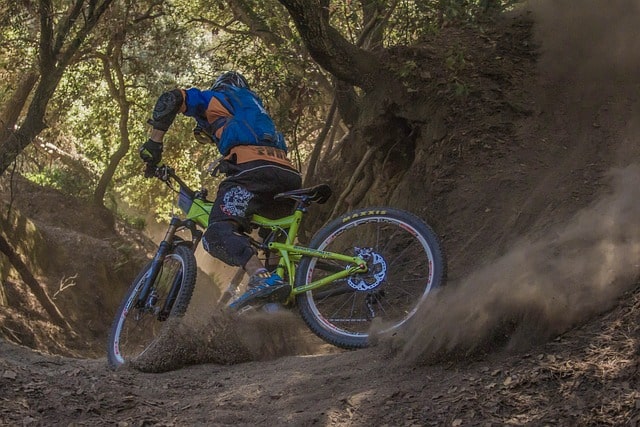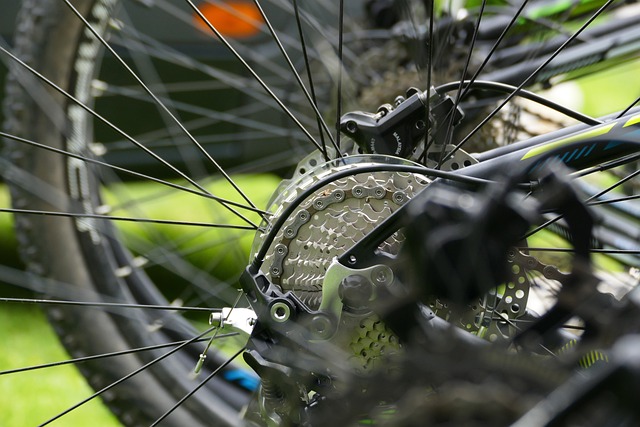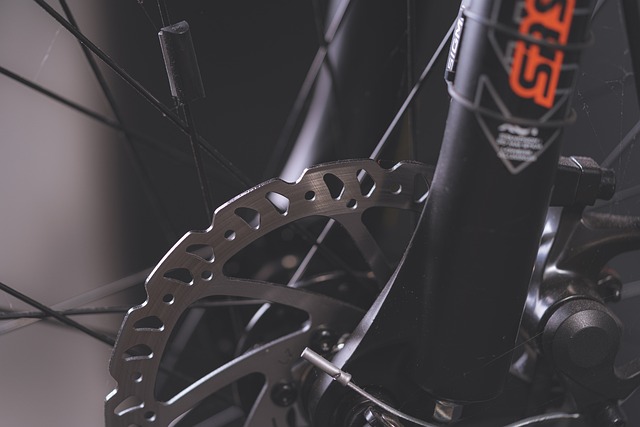Finding Your Perfect Ride: A Complete Guide to Selecting a Mountain Bike

Choosing the right mountain bike can be a thrilling yet daunting task. With countless options, styles, and technical aspects to consider, you need to find the perfect match for your riding style and budget. This comprehensive guide will take you through the essential factors to consider when selecting the ideal mountain bike.
Whether you're a beginner just embarking on the exciting journey of mountain biking or an experienced rider looking to upgrade your current ride, the sheer number of choices available can easily become overwhelming. Different terrains and riding styles demand different features, and technological advancements have only expanded the possibilities.
In the pursuit of the perfect mountain bike, you must consider factors such as the type of riding you intend to do, the frame materials, suspension, wheel size, gearing, brakes, and, of course, the size and fit of the bike itself. The importance of balancing quality with budget cannot be overstated either, as the mountain biking world offers a broad spectrum of price points.
Furthermore, the selection process extends beyond mere specifications. The aesthetic appeal, brand reputation, and even the local availability of service and parts can play a role in your decision-making process.
To help you navigate this complex landscape, we will delve into each of these factors in detail, providing insights, explanations, and recommendations. By the end of this guide, you should have a clearer understanding of what to look for, what to avoid, and how to identify the mountain bike that aligns perfectly with your unique needs, preferences, and aspirations. The open trails await, and the right mountain bike is your ticket to exploration, adventure, and unending fun.
Riding Style
Understanding your riding style is a critical first step in the selection process for the right mountain bike, as it determines the features and specifications that will be most beneficial for your particular needs. Let's delve into the various mountain biking disciplines and what they mean for your bike selection.
Cross-Country (XC)
Typical Features: XC bikes are designed to be light and efficient, making them perfect for climbing and faster rides on less rugged terrains. They often have 80-120mm of suspension travel.
Best For: Riders looking to cover long distances, race, or enjoy smoother trails.
Trail
Typical Features: Trail bikes are the all-rounders of the mountain biking world. With 130-150mm of travel, they provide a balanced ride that can handle various terrains.
Best For: Riders seeking versatility and a bike that performs well on both climbs and descents. Ideal for general mountain biking on varied trails.
All-Mountain/Enduro
Typical Features: AM/Enduro bikes feature 150-170mm of travel and are built to withstand rough and technical terrains, without sacrificing too much climbing ability.
Best For: Riders who love challenges, including steep, rocky paths, and technical sections. Enduro racing enthusiasts.
Downhill (DH)
Typical Features: Downhill bikes are the heavy hitters, with 180-200mm of travel, designed for steep and technical descents. They are usually heavier and focus on stability and control at high speeds.
Best For: Riders who crave adrenaline-pumping descents and plan to ride predominantly on steep and rough trails. Not ideal for climbing or general-purpose riding.
Bike Frame Materials
The bike's frame material plays a crucial role in defining its weight, durability, ride quality, and cost. Understanding these materials and their respective attributes can help you make an informed decision that aligns with your needs and budget. Here's a deeper look at the common frame materials:
Aluminum
Typical Features: Aluminum frames are known for their lightweight and robust nature. Modern aluminum frames often use various alloys and shaping techniques to provide excellent strength-to-weight ratios.
Best For: Most riders, particularly those looking for a balance between performance and affordability. Ideal for both recreational and competitive riding.
Considerations: While aluminum offers a great blend of properties, it can be less forgiving than other materials, meaning it might feel stiffer on rough terrains.
Carbon Fiber
Typical Features: Carbon fiber is renowned for its light weight, stiffness, and ability to be molded into aerodynamic shapes. It allows engineers to create frames with specific strength and flex characteristics.
Best For: Enthusiasts and competitive riders seeking high performance and willing to invest in a more expensive frame.
Considerations: Carbon frames require careful handling, as they can be more prone to damage from sharp impacts. Repairs can be costly and complex.
Steel
Typical Features: Steel is a classic frame material known for its durability and supple ride quality. It offers a more forgiving and comfortable ride compared to aluminum.
Best For: Riders looking for a rugged and durable frame, or those who value a smooth ride over weight considerations.
Considerations: Steel tends to be heavier than aluminum and carbon, which might make it less suitable for competitive racing or performance-oriented riding.
Titanium (Optional)
Typical Features: Titanium combines the lightweight attributes of aluminum with the strength and ride comfort of steel. It's highly resistant to corrosion.
Best For: Riders looking for a premium frame material that offers a unique blend of characteristics.
Considerations: Titanium frames are typically more expensive and less common than the other materials, but they provide a distinctive ride quality appreciated by many enthusiasts.
Suspension
Suspension plays a vital role in a mountain bike's performance, providing control, comfort, and increased traction, particularly over rough and uneven terrains. The two main types of suspension setups in mountain biking are hardtail and full suspension, each offering distinct advantages and drawbacks based on riding style and trail demands.
Hardtail
Typical Features: Hardtail bikes feature a suspension fork in the front but have a rigid rear end. This design leads to less complexity, reduced weight, and often a lower cost.
Best For:
- Cross-Country and Lighter Trail Riding: The reduced weight and simplicity make hardtails efficient climbers and well-suited for smoother trails.
- Budget-Friendly Options: Ideal for beginners or those looking for a less expensive entry into mountain biking.
- Efficiency: With no rear suspension to absorb energy, hardtails can feel more responsive and efficient, particularly on smoother surfaces.
Considerations:
- Limited Comfort on Rough Terrains: Without rear suspension, hardtails can feel harsh on rough and technical trails, demanding more skill and physical effort from the rider.
Full Suspension
Typical Features: Full suspension bikes have both front and rear suspension, providing a smoother and more controlled ride on challenging terrains. They come with varying degrees of travel, catering to different riding styles.
Best For:
- Rough and Technical Trails: Full suspension smooths out the bumps and helps maintain control and traction, even in demanding conditions.
- Downhill and Enduro Riding: The additional control and comfort are crucial for these more aggressive riding styles.
- Riders Seeking Comfort: The added suspension can reduce fatigue and make longer rides more enjoyable.
Considerations:
- Weight and Complexity: Full suspension adds weight and mechanical complexity, which might affect climbing efficiency and require more maintenance.
- Cost: Generally, full suspension bikes are more expensive than their hardtail counterparts.
Suspension Technology and Tuning
Beyond the choice between hardtail and full suspension, there's a world of technology and tuning options within mountain bike suspension systems. Factors to consider include:
- Travel: Measured in millimeters, travel refers to how much the suspension can compress under force. More travel provides greater shock absorption but may add weight.
- Damping: Adjusting damping controls how quickly the suspension returns to its normal position after compression, affecting ride feel and performance.
- Spring Type: Suspension systems may use air or coil springs, each offering different characteristics in terms of weight, adjustability, and feel.

Gearing
The gearing system on your mountain bike greatly influences how the bike performs under various riding conditions. The number of gears, ratios, and type of drivetrain all play a part in defining the bike's ability to tackle different terrains, climb steep inclines, and maintain speed on flats. Here's a detailed look at mountain bike gearing:
Number of Gears
Mountain bikes come with a range of gears, typically ranging from 10 to 30 or more, with different combinations of chainrings (front gears) and cogs (rear gears).
- Fewer Gears: Bikes with fewer gears often have a simpler setup and are lighter. These can be ideal for specific riding styles like XC racing where efficiency is key.
- More Gears: Having a wide range of gears offers greater versatility, allowing you to easily adapt to different terrains and gradients.
Gear Ratios
The ratio between the chainrings and cogs determines how hard or easy it is to pedal at a given speed.
- Low Ratios: Smaller chainrings and larger cogs create low gear ratios, making it easier to climb steep hills but reducing top speed.
- High Ratios: Larger chainrings and smaller cogs create high gear ratios, enabling higher speeds but making climbing more challenging.
Single vs. Multiple Chainrings
- Single Chainring (1x): This setup offers simplicity, weight savings, and reduced maintenance. A wide-range rear cassette compensates for the single front chainring, offering a broad spectrum of gears.
- Multiple Chainrings (2x or 3x): Multiple front chainrings provide more gear options and finer adjustments between gears. However, this adds complexity, weight, and may require more frequent tuning.
Electronic vs. Mechanical Shifting
Modern mountain bikes may feature electronic shifting, providing precise and effortless gear changes at the touch of a button.
- Electronic Shifting: Known for precision and reliability but typically more expensive.
- Mechanical Shifting: Traditional cable-operated shifting is generally more affordable but may require more maintenance and fine-tuning.
Considerations
- Riding Style and Terrain: Think about where and how you'll be riding. Steeper and more varied terrains may benefit from a wider range of gears, while specific race disciplines might favor a simpler setup.
- Weight and Complexity: More gears and chainrings add weight and mechanical complexity. Consider the trade-offs between versatility and simplicity.
- Budget: Advanced gearing systems, especially electronic ones, can add to the overall cost of the bike.

Brakes
Brakes are one of the most crucial components of a mountain bike, directly impacting safety, control, and overall performance. In modern mountain biking, hydraulic disc brakes have become the standard, but there are various types, technologies, and considerations to keep in mind. Here's an in-depth look at brakes, focusing mainly on hydraulic disc brakes.
Hydraulic Disc Brakes
Typical Features:
- Superior Stopping Power: Hydraulic disc brakes provide strong and consistent stopping power, even in wet or muddy conditions.
- Modulation: They allow for precise control over braking force, enabling smoother and more controlled deceleration.
- Low Maintenance: Unlike mechanical systems, hydraulic brakes are sealed, reducing the need for frequent adjustments and maintenance.
- Heat Dissipation: Hydraulic brakes often have design features to dissipate heat, reducing the risk of fading (loss of braking power) during extended descents.
Considerations:
- Cost: Generally more expensive than mechanical disc brakes or rim brakes.
- Complexity: Hydraulic brakes can be more challenging to service at home, often requiring specialized tools and knowledge.
- Weight: Though they are more efficient, hydraulic disc brakes might be slightly heavier than other brake types.
Mechanical Disc Brakes
While hydraulic disc brakes are standard on higher-end bikes, some entry-level models might come with mechanical disc brakes.
- Advantages: More affordable and easier to maintain at home.
- Disadvantages: They generally offer less stopping power and modulation compared to hydraulic systems.
Rim Brakes
While becoming less common in mountain biking, rim brakes might still be found on older or very budget-oriented bikes.
- Advantages: Simplicity and low weight.
- Disadvantages: Reduced stopping power, especially in wet conditions, and potential wear on the wheel rims.
Brake Rotor Sizes
Disc brake systems use rotors attached to the wheel hubs. Different rotor sizes offer variations in braking performance:
- Larger Rotors: Provide more stopping power and better heat dissipation but are heavier.
- Smaller Rotors: Lighter and may be suitable for less aggressive riding styles.
Sizing
Selecting the proper bike size is a critical aspect of purchasing a mountain bike, as it directly impacts comfort, efficiency, handling, and overall performance. Riding a bike that doesn't fit can lead to discomfort and can negatively affect your control and enjoyment on the trails. Here's a more comprehensive look at the process and considerations for determining the correct bike size:
Understanding Bike Sizing
Mountain bikes are typically sized by frame size, which is usually measured in inches or centimeters and corresponds to the length of the seat tube. The right size can vary significantly between individuals and even between different models and brands.
Manufacturer's Size Charts
- Guideline: Most bike manufacturers provide specific size charts that correlate rider height, inseam length, and sometimes arm length with recommended frame sizes. These charts offer a general guideline but are not definitive.
- Variances Between Brands: Different brands may have slightly different sizing recommendations, so it's essential to consult the specific size chart for the brand and model you're considering.
Trying Bikes In-Store
- Test Ride: Whenever possible, visiting a bike store to physically try out different sizes and models is highly beneficial. Riding the bike, even briefly, can provide a real sense of how it fits.
- Professional Assistance: In-store staff who specialize in mountain biking can provide expert insights, observe your posture on the bike, and make recommendations tailored to your body and riding style.
Other Sizing Considerations
- Geometry: Modern mountain bikes come in various geometries that influence how they handle. Factors like the top tube length, handlebar height, and seat angle can affect how the bike fits and feels.
- Adjustments: Minor adjustments to components like the saddle height, handlebar position, and stem length can fine-tune the bike's fit. Custom adjustments might be necessary for optimal comfort and performance.
- Riding Style: Your riding style (XC, trail, downhill, etc.) may influence the ideal size and fit. More aggressive riding may require a different setup than casual trail riding.
- Women-Specific Designs: Some manufacturers offer women-specific models designed with differences in body proportions in mind. These may provide a better fit for some female riders.
Budget
The budget for a mountain bike can significantly influence the type, quality, and features of the bike you can afford. Mountain bikes come in a broad spectrum of price ranges, from budget-friendly options to high-end models that can cost several thousand dollars. Here's an in-depth look at how to approach your budget and what to expect at different price points:
Determine Your Budget
- Identify Your Needs and Preferences: Assess your riding style, frequency, and the terrains you intend to explore. This assessment will help you understand what features and qualities are most important to you.
- Set a Realistic Range: Establish a budget range that aligns with your financial situation. Be mindful of potential extra costs like accessories, maintenance, and upgrades.
Budget-Friendly Options
- Price Range: Often starting under $500, budget-friendly mountain bikes are typically best suited for beginners, casual riders, or those on a tight budget.
- Features and Limitations: These bikes may have basic components, heavier materials like steel, and limited suspension options. They are functional but may lack performance features found in more expensive models.
- Considerations: While budget-friendly, make sure the bike meets safety standards and fits your intended use. Ultra-cheap bikes may have significant quality issues.
Mid-Range Options
- Price Range: Generally ranging from $500 to $2,000, mid-range bikes offer a balance of quality, performance, and affordability.
- Features: Expect better quality components, including hydraulic disc brakes, more advanced suspension, and lighter frame materials like aluminum.
- Considerations: Spending a bit more within this range can lead to a substantially better bike, especially in terms of components and comfort.
High-End Models
- Price Range: Typically starting around $2,000 and going up to $10,000 or more, high-end models cater to serious enthusiasts and competitive riders.
- Features: These bikes often feature top-tier components, cutting-edge technologies, carbon fiber frames, and custom options.
- Considerations: While offering outstanding performance, ensure that the additional investment aligns with your riding needs and that you aren't paying for features you won't utilize.
Used Bikes
- Advantages: Buying used can allow you to get a better-quality bike at a fraction of the original price.
- Considerations: Be cautious about potential wear and tear, hidden defects, or outdated technologies. Inspecting the bike or having a professional do so is advised.
Test Riding
Test riding a mountain bike before purchasing is one of the most effective ways to ensure that the bike fits your body, riding style, and preferences. The hands-on experience provides insights that specifications and recommendations cannot fully convey. Here's a detailed guide to approaching test rides and what to look for during the process:
Where to Test Ride
- Local Bike Shops: Many local bike shops offer test rides of the bikes they sell. Some may even have demo events where multiple models can be tested.
- Bike Expos and Events: Manufacturers often bring their lineup to bike expos, festivals, or special demo days at popular trails. Keep an eye on local cycling events in your area.
- Rentals: Some shops or trail centers offer rental bikes that are the same or similar to models you might be interested in buying.
What to Look for During a Test Ride
- Fit and Comfort: Pay attention to how the bike feels in terms of size, geometry, and overall comfort. Check the reach, saddle position, handlebar width, etc.
- Handling and Performance: Try to ride in conditions similar to what you usually encounter. Assess the bike's handling, responsiveness, stability, and how it performs on climbs and descents.
- Suspension Feel: If applicable, evaluate how the suspension feels. Is it plush and absorbing, or too stiff? Some bikes offer adjustable suspension that can be fine-tuned to your preference.
- Braking Performance: Test the brakes in a safe environment to gauge their stopping power and modulation.
Conclusion
Choosing the right mountain bike is a process that involves understanding your riding style, preferences, and budget. By considering factors such as frame material, suspension, wheel size, gearing, brakes, and proper sizing, you can find the bike that suits your needs and offers the most enjoyable riding experience.
Remember, the right bike for you is one that fits your body, meets your riding expectations, and falls within your budget. Visit local bike shops, consult with experienced riders, and take your time to make an informed decision. Your mountain bike is an investment in adventure, fitness, and fun, and taking the time to choose wisely will pay off on the trail.

